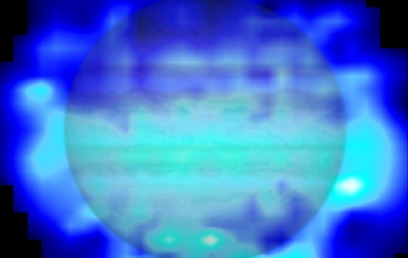Europe’s (Really) Cool Telescope Ends Operations
The Herschel Space Telescope closes its eye after the last of its coolant evaporated this week

Herschel detects water in Jupiter's stratosphere. Image: ESA/Herschel/T. Cavalié et al.; Jupiter image: NASA/ESA/Reta Beebe (New Mexico State University)
The Herschel Space Telescope was never meant for hot astronomy topics. It was meant for the cool ones. The European Space Agency spacecraft officially ended its observations yesterday when the last of its liquid helium, used to keep the telescope’s temperature close to absolute zero, was exhausted after three years of operation.
Herschel was launched in 2009 and spent its mission orbiting at L2, one of five Lagrangian points in the Earth-Sun system that are gravitationally stable. L2 is nearly a million miles farther from the sun than Earth is — ESA’s Planck Space Telescope, among others, is already stationed there, and it’s the future location of NASA’s James Webb Space Telescope. That far from the Sun is an ideal place to look at cool objects.
Observing in a broad spectral range from the far infrared to submillimeter wavelengths, Herschel could study dim objects, like asteroids in the Kuiper belt at the edge of our solar system, or debris disks where planets are forming around other stars. It also saw red-shifted light from early and active star-forming galaxies. Herschel hunted for water around the universe, finding ice particles heated by ultraviolet light from stars in many protoplanetary disks, and discovering that nearly all the water in Jupiter’s atmosphere was brought to the planet by comet Shoemaker-Levy 9 in 1994.
Herschel had the largest infrared mirror ever launched into space — at 3.5 meters in diameter, it’s more than a meter bigger than the Hubble Space Telescope’s. (JWST’s mirror, however, will be almost twice as big as Herschel’s.) Scientists are still reviewing data from the space observatory, so even though the spacecraft has gone dead, discoveries will likely still be made. Indeed, astronomers are hoping that a brand new ground-based observatory can leapfrog off of Herschel’s contributions in studying the “cool” universe: ALMA, the Atacama Large Millimeter/submillimeter Array in Chile, began operating earlier this year and should be fully operational in September. Combining their data should tell us much about the early universe and galaxy formation.